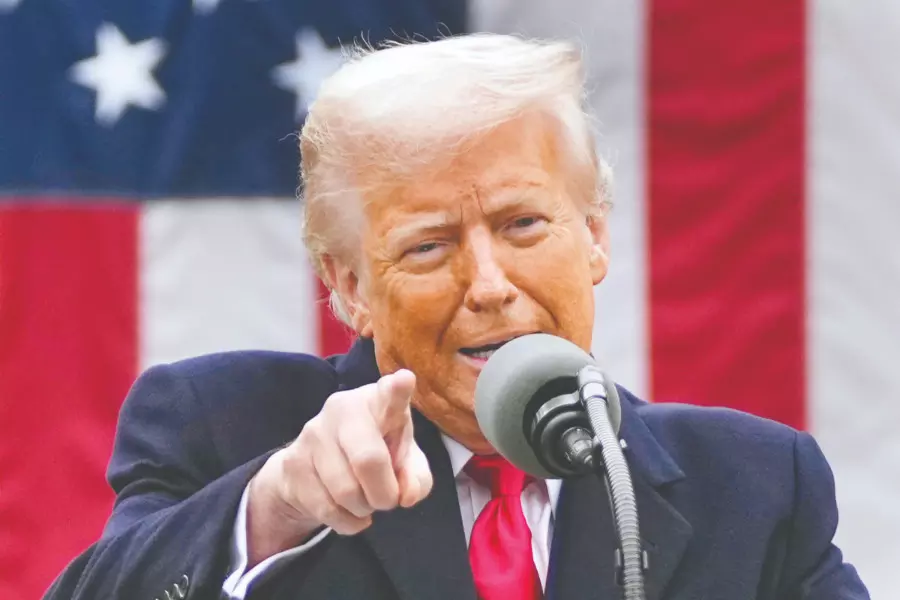US tariff hike on Indian goods kicks in today

Washington/New Delhi: The United States will increase tariffs on Indian exports to 50 per cent from August 27, in a move that will affect goods worth over USD 48 billion annually. The decision, laid out in a draft order by the US Department of Homeland Security on Monday, follows an earlier 25 per cent tariff imposed on August 7. The new levy has been introduced as part of Washington’s sanctions against New Delhi for continuing to import Russian crude oil and military hardware despite repeated objections.
According to the draft order, the higher duties will apply to Indian products “entered for consumption, or withdrawn from warehouse for consumption, on or after 12:01 am eastern daylight time on August 27, 2025.” Goods that are already on vessels bound for the US before the deadline and cleared for consumption in the country before September 17, will not attract the higher tariff, provided importers make the required declaration with a special code to US Customs.
The new regime will hit some of India’s most significant export sectors. Industries such as textiles, garments, gems and jewellery, shrimp, leather, footwear, chemicals, as well as electrical and mechanical machinery are expected to bear the brunt of the additional duties. Pharmaceuticals, energy products, and electronics, however, will not be covered under the revised tariff structure. According to estimates by the Commerce Ministry, merchandise exports worth USD 48.2 billion will now be subject to the increased levy, based on India’s trade with the US in 2024.
Trade analysts have warned of serious repercussions for India’s labour-intensive industries.
The Global Trade Research Initiative (GTRI) calculated that nearly two-thirds of India’s exports to the US, valued at USD 60.2 billion, will now face the 50 per cent tariff. Another 3.8 per cent of exports, mostly automobile components worth USD 3.4 billion, will face a 25 per cent duty. Only around 30 per cent of exports, amounting to USD 27.6 billion, will continue to enter the American market without additional levies.
Exporters in key industries have expressed concern about the impact on jobs and competitiveness. A jewellery exporter said that layoffs were inevitable, adding, “Job cuts will happen for sure in the jewellery and diamond sectors as the US is our largest market.” An official from the leather and footwear industry warned that companies would be forced to cut staff and halt production until there was clarity on the proposed bilateral trade agreement. “The industry was looking to double bilateral trade in goods and services to USD 500 billion from the current USD 191 billion, but these duties change the outlook drastically,” the official remarked.
The apparel industry, which sends products worth over USD 10 billion annually to the US, is expected to face one of the sharpest blows. Mithileshwar Thakur, Secretary General of the Apparel Export Promotion Council, said the latest measure would wipe out India’s presence in the American market. “The additional burden of another 25 per cent has effectively driven the Indian apparel industry out of the US market as the gap of 30 to 31 per cent tariff disadvantage vis-a-vis major competing countries like Bangladesh, Vietnam, Sri Lanka, Cambodia and Indonesia is well-nigh impossible to bridge,” he said. Federation of Indian Export Organisations (FIEO) President S C Ralhan also noted, “The move will severely disrupt the flow of Indian goods to its largest export market.”
India’s rivals in the region stand to benefit. Competitors such as Bangladesh, Vietnam, Cambodia, and Indonesia, which face much lower duties ranging from 20 to 35 per cent, are expected to gain a price advantage. Trade researchers believe the new tariffs will particularly hurt shrimp exports of USD 2.4 billion from Visakhapatnam, diamond and jewellery exports of USD 10 billion from Surat and Mumbai, and textile and apparel shipments of USD 10.8 billion from Tirupur, Bengaluru, and NCR. Carpets worth USD 1.2 billion and handicrafts worth USD 1.6 billion are also expected to lose ground to Turkey and Vietnam, while agri-food exports including basmati rice, spices, and tea valued at USD 6 billion are likely to cede market share to Pakistan and Thailand. Metals such as steel, aluminium and copper, organic chemicals, and machinery exports will also be affected.
The announcement comes amid strained political relations between Washington and New Delhi. Earlier this month, White House Press Secretary Karoline Leavitt said President Donald Trump had imposed the sanctions to bring an end to the conflict between Russia and Ukraine. US Treasury Secretary Scott Bessent accused India of making profits by reselling Russian oil. India rejected the charges on August 6, calling the measures “unfair, unjustified and unreasonable”.
The United States has been India’s largest trading partner since 2021-22. In 2024-25, bilateral goods trade stood at USD 131.8 billion, with Indian exports at USD 86.5 billion and imports at USD 45.3 billion. According to US figures, India’s exports to the American market were USD 91.2 billion in 2024. Trade experts now predict that India’s shipments could fall sharply under the new tariff structure. GTRI founder Ajay Srivastava said, “India’s exports to the US are expected to decline steeply to about USD 49.6 billion in FY2026 due to Washington’s new tariff regime.”
Exporters are urging the government to step in with relief measures. One jewellery exporter argued, “We need a long-term export strategy to deal with these high tariffs. We need interest subsidy, ease of doing business, timely refund of GST dues and a reformed special economic zone law.” For now, however, India’s exporters are bracing for what they describe as prohibitive duties that could threaten jobs, profits, and the country’s position in its largest overseas market.



